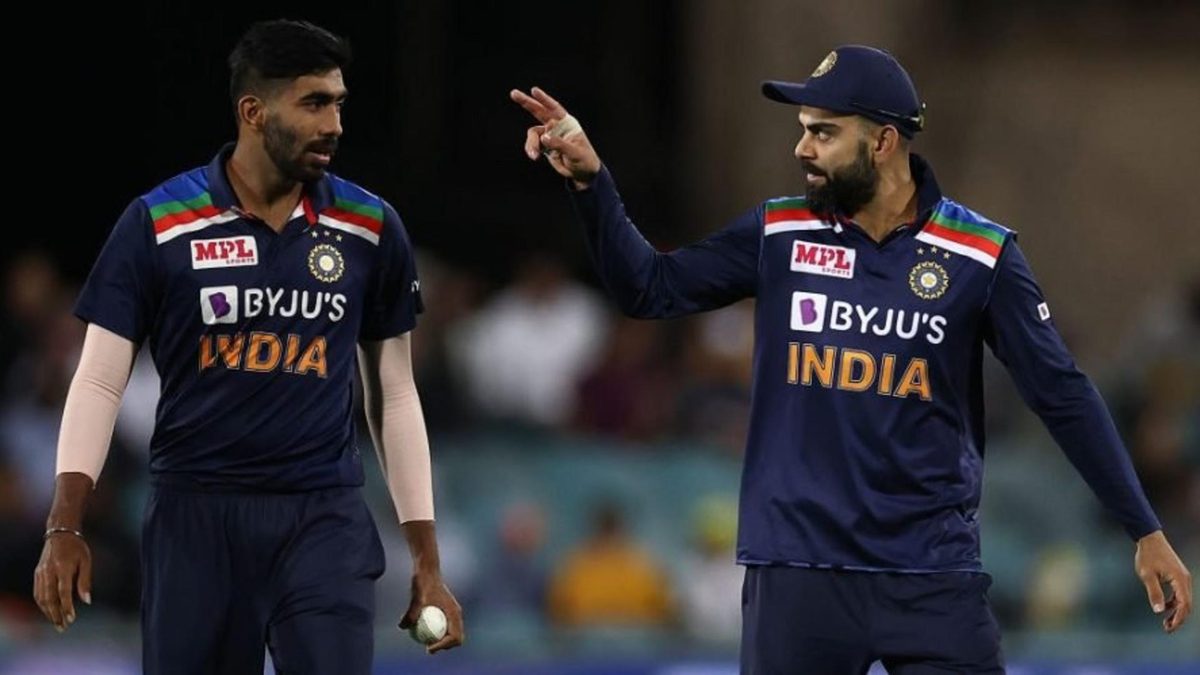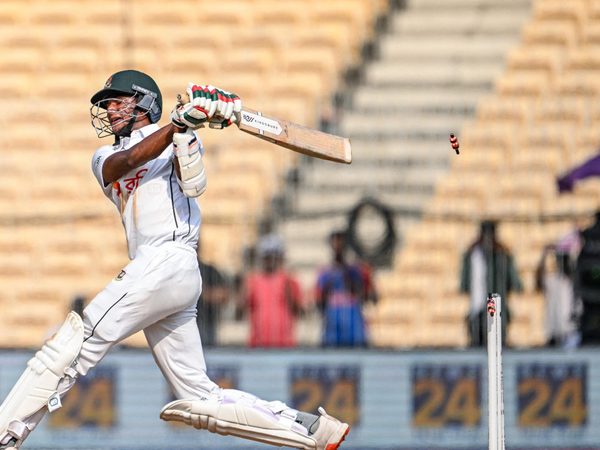
Following the conclusion of the three-match ODI series between Australia and India, here are our marks out of ten for the visiting team.
The series was comfortably one-sided for its first two games, before India managed a consolation win in the concluding ODI, bringing an end to a five-match losing streak in the format. The entire series was batting dominated, with five 300+ scores in six innings, and India’s bowlers managing a combined 18 wickets between them, with only two out of the ten bowlers used ending with an economy of less than six.
Mayank Agarwal 3/10
50 runs @ 25.00, HS: 28
Mayank had big shoes to fill, opening with Shikhar Dhawan in the absence of Rohit Sharma. An established Test name, Mayank racked up two starts but couldn’t translate them into substantial scores, failing to cross 30 on both occasions. Although he’s part of the T20I squad, Mayank might just have to wait till the Test series for his next game.
Shikhar Dhawan 7/10
120 runs @ 40.00, HS: 74
Dhawan hit form in the IPL, scoring two centuries, but couldn’t force the same impact in the ODI series, scoring a combined 120 runs, 74 of which came in a sedate, if important, knock in the first game. In the remaining two games, he took time to settle down, but couldn’t stay long enough, scoring at a strike-rate of 84.61 across the series.
Shubman Gill 7/10
33 runs @ 33.00, HS: 33
Over the last two years, Gill has spent more time on the bench than in the team, keenly waiting for his place in the XI. For the final ODI, Gill replaced Mayank Agarwal, and briefly showcased his delectable range of strokes, scoring a breezy 39-ball 33. It wasn’t game-changing but gave enough evidence of the solidity he brings at the top, and could help him land a spot in the T20I series.
Virat Kohli 8/10
173 runs @ 57.66, HS: 89
Kohli was the cynosure of all eyes when the series began, but ended it largely as a quiet figure despite two fifty-plus scores, with the Australian batsmen taking most of the plaudits. He passed two significant records on the way, (22,000 international runs and 12,000 ODI runs), but ended the year without a century in ODIs for the first time since 2009, a remarkable anomaly in itself.
Shreyas Iyer 3/10
59 runs @ 19.66, HS: 38
Iyer came into the series as India’s supposed solution to their long-standing No.4 problem, but ended the series with more questions than answers, enduring a sub-par stint with a best of 38 in three innings. Playing in the pivotal two-down position, Iyer seemed to be stuck in figuring out whether to attack or defend, and ended up scoring at just a run-a-ball.
KL Rahul 6/10
93 runs @ 31.00, HS: 76
Rahul came into the series with heightened responsibility on his shoulders, being named deputy to Virat Kohli while also doubling up as the first-choice wicketkeeper in the squad. His batting performances typified his ODI career, brilliant in patches, but not defining. The bulk of his runs came in the second ODI, in a stroke-filled 76 at No.5 complete with five sixes. The other two innings weren’t as impactful.
Hardik Pandya 9/10
210 runs @ 105.00, HS: 92*
A recent surgery prevented him from bowling regularly, but Pandya, the batsman did enough damage alone, smashing two 90-plus scores, the latest of which formed one-half of the biggest sixth-wicket partnership in all Australia-India ODIs. It followed the template he had set batting for Mumbai Indians a month ago, playing himself in before shifting gears towards the back end.
Ravindra Jadeja 6.5/10
115 runs @ 57.50, HS: 66*; 1 wicket @ 185.00, economy: 6.16, BBI: 1-62
Jadeja, whose sparkling all-round performances lit up an otherwise bland CSK campaign in IPL 2020, pulled off an incredible recovery act in the third ODI, combining with Hardik Pandya in an unbeaten century stand, where he contributed a 50-ball 66. The points were mostly for his batting though: with the ball, Jadeja mostly played a containing role, picking just the one wicket, and ending with the worst bowling average for an Indian bowler in the series.
T Natarajan 6.5/10
2 wickets @ 35.00, economy: 7.00, BBI: 2-70
Natarajan’s remarkable journey entered a new chapter when he was fast-tracked into the ODI setup, featuring in the last match of the series, and playing his part in the consolation win. Carrying the confidence of a breakthrough IPL, Natarajan was impressive at the death, bowling 30 dots and picking up two wickets, even if the final tally looked a touch expensive.
Jasprit Bumrah 5/10
4 wickets @ 48.75, economy: 6.61, BBI: 2-43
Bumrah started the series with a lacklustre record to shrug off, having not picked an ODI wicket for the most part of 2020. After two relatively expensive spells, Bumrah’s form of old resurfaced: the yorkers were pin-point, the slower balls were coming off nicely, and the crucial wicket of Glenn Maxwell in the final ODI quite possibly turned the game around.
Yuzvendra Chahal 2/10
1 wicket @ 160.00, economy: 8.42, BBI: 1-89
On his last tour to Australia, Chahal claimed a six-wicket haul in the only ODI he played, but he ended this series with just two wickets in as many games, running into a red-hot Australian batting unit. His lacklustre spell of 1-89 made for the most expensive figures by an Indian spinner in ODIs, an unwanted record that highlighted his lack of impact on pitches in Australia with little assistance for spin.
Kuldeep Yadav 5/10
1 wicket @ 57.00, economy: 5.70, BBI: 1-57
Kuldeep got just the one game, entering the fray when Chahal was kept out of the last ODI. The wickets column displayed just the one scalp, but Kuldeep’s testing lengths symbolised a return to much-needed rhythm, having endured a tough phase during the IPL. For the T20Is, however, Kuldeep might be edged out again if India persist with the Chahal-Jadeja combination.
Shardul Thakur 8/10
3 wickets @ 17.00, economy: 5.10, BBI: 3-51
Thakur tends to fly under the radar when bowling alongside some of India’s more established names, but came to the fore in a new-look bowling attack that was assembled for the final ODI. Thakur found subtle movement early on, and combined it with impressive lengths, picking up two crucial wickets in his first spell, including the all-important wicket of Steve Smith.
Navdeep Saini 2/10
1 wicket @ 153.00, economy: 9.00, BBI: 1-83
There was considerable criticism directed Saini’s way after the right-arm quick bowled two expensive spells in back-to-back games, conceding over 70 in both his appearances. It resulted in an eye-watering bowling average of 153.00, following which he was left out of the final game. It remains to be seen if his disappointing ODI showing curbs his chances of featuring in the T20I and Test legs of the tour.
Mohammed Shami 6/10
4 wickets @ 33.00, economy: 6.94, BBI: 3-59
In a series where the Indian bowler went for runs aplenty, Shami ended with possibly the most civil bowling figures, picking up four wickets, three of which came in his spell in the first game. While he conceded 73 in the other game, he still managed an economy of under seven, although his performance in the powerplay overs could be a cause of worry in the T20Is to follow.








